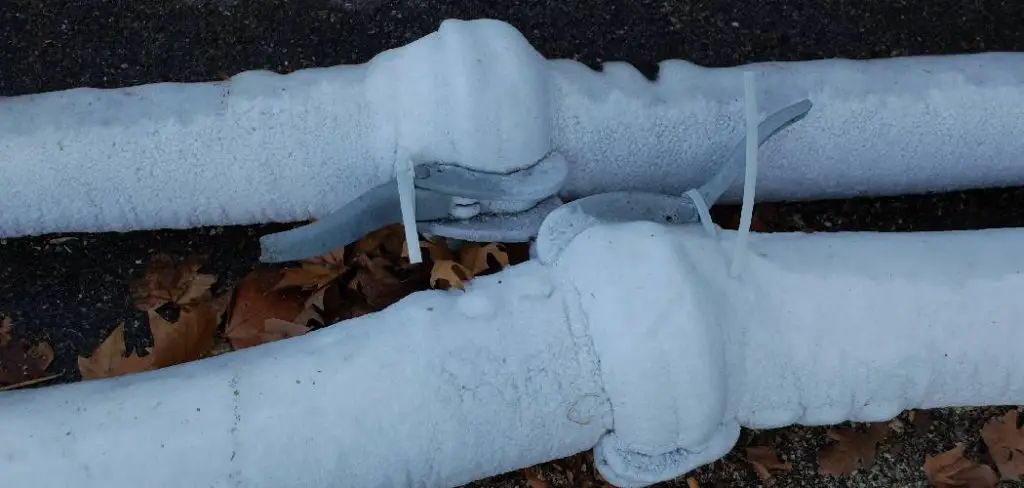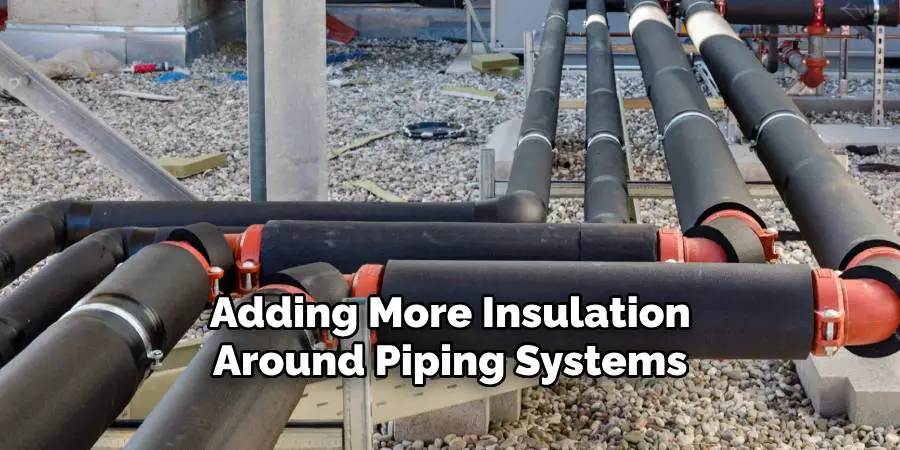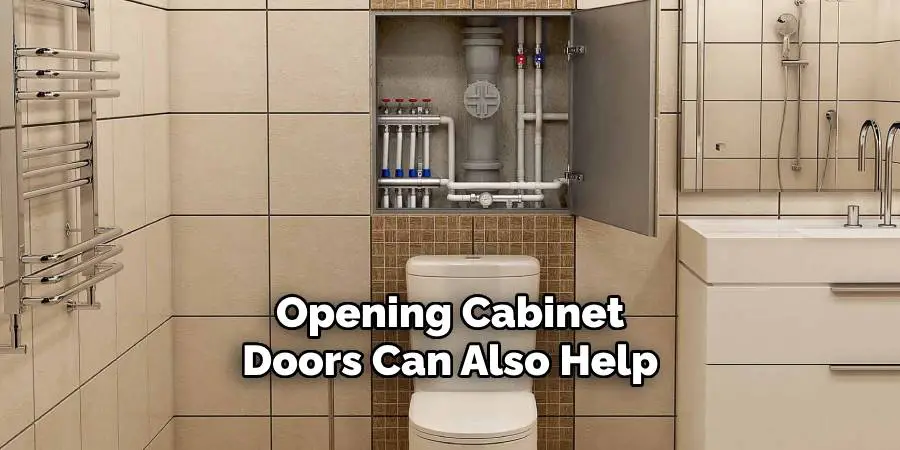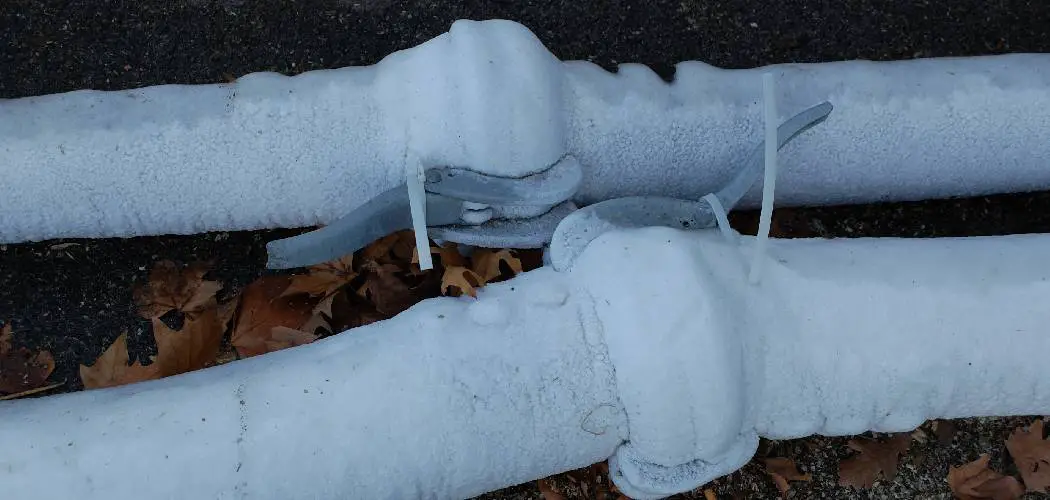The chill of winter can be enchanting, but it also brings challenges, especially when it comes to keeping your home’s plumbing system in good working order. One common issue during freezing temperatures is the risk of toilet pipes freezing, which can lead to disruptions in your daily life and costly repairs. The last thing you want on a cold morning is a frozen toilet.

In this comprehensive guide, we’ll explore how to keep toilet pipes from freezing. From insulating your pipes to using heat tape and ensuring proper ventilation, you’ll discover a range of solutions to protect your toilet plumbing.
Whether you’re a homeowner preparing for the winter season or a traveler looking to safeguard your vacant property, this guide will equip you with the knowledge and tools to prevent toilet pipes from freezing. Say goodbye to the inconvenience of frozen toilets and welcome a worry-free winter with a well-protected plumbing system.
Importance of Preventing Toilet Pipe Freezing
Toilet pipes are an essential part of every household, and a frozen pipe can cause major disruptions and inconvenience. The most common cause for toilet pipe freezing is when the temperature drops below freezing point, causing the water inside the pipes to freeze and expand, leading to potential cracks or bursts in the pipe. Not only does this make it impossible to use your toilet until the issue is resolved, but it can also result in costly repairs.
In addition to being inconvenient and expensive, frozen toilet pipes can also pose health risks. When a pipe freezes, there is a high chance of bacteria and germs accumulating within the stagnant water, which can lead to contamination and spread of diseases. This makes it crucial to take preventive measures to avoid such situations from occurring.
Preventing toilet pipe freezing not only ensures the proper functioning of your household but also helps in conserving water. When a frozen pipe bursts, it can lead to significant water wastage, which not only affects your utility bills but also adds to the global issue of water scarcity. By taking steps to prevent toilet pipe freezing, you are not only protecting your own home but also contributing towards sustainable living practices.
Moreover, preventing toilet pipe freezing is a simple step that can save you from major inconveniences and expenses in the long run. By regularly maintaining and insulating your pipes, as well as keeping an eye on temperature changes, you can avoid potential issues before they even occur. This will ensure that your household runs smoothly without any disruptions or unexpected costs.
10 Methods How to Keep Toilet Pipes from Freezing
1. Insulate the Pipes

Insulating the pipes is one of the best ways to prevent them from freezing. This can be done by wrapping them in foam insulation or using a pipe sleeve. Make sure to use an insulation that is specifically designed for pipes, as other types may not be effective. Additionally, make sure to leave some space between the insulation and the pipe so that air can circulate and keep the pipe warm.
2. Keep Cabinet Doors Open
Another way to keep your toilet pipes from freezing is to keep cabinet doors open when temperatures drop below freezing. This will allow warm air to circulate around the pipes and help keep them from getting too cold. Just make sure not to leave any flammable materials near an open flame, such as a furnace or water heater, as this could be a fire hazard.
3. Use Heat Tape
Heat tape is a type of electrical tape that has heating elements embedded in it. It can be wrapped around pipes and plugged into an outlet to provide additional heat when temperatures drop below freezing. Make sure to use heat tape that is specifically designed for pipes, as other types may not be safe to use on plumbing fixtures.
4. Seal Air Leaks
Air leaks around windows and doors can cause cold air to enter your home and cool down your toilet pipes. To prevent this from happening, make sure all windows and doors are properly sealed with caulk or weatherstripping when temperatures start to drop outside. This will help keep cold air out of your home and help keep your toilet pipes from freezing over.
5. Install a Heated Floor

Installing a heated floor underneath your toilet can also help keep it from freezing over during cold weather months. This type of flooring uses electric coils or hydronic tubing beneath the surface of the flooring material in order to provide heat directly where it’s needed most – under your toilet!
6. Use Hot Water Bottles
Using hot water bottles is another simple way to keep your toilet from freezing over during winter months. Simply fill up two large hot water bottles with hot water (not boiling) and place them next to each side of the toilet bowl before going to bed at night – this will help maintain warmth throughout the night and hopefully prevent any frozen toilets!
7. Turn Up Your Thermostat
Turning up your thermostat during colder months can also help reduce the chances of frozen toilets – just make sure you don’t turn it up too high! Keeping it at least 10 degrees Fahrenheit above room temperature should do the trick.
However, if you’re still having issues with frozen toilets after doing this, then you may need additional measures like installing more insulation around your piping system or adding heated flooring underneath your bathroom fixtures!
8. Add More Insulation Around Piping System

Adding more insulation around piping systems is another great way of preventing frozen toilets during winter months – simply wrap foam insulation around exposed piping systems in order for them to stay protected against extremely cold temperatures! Be sure that you purchase quality foam insulation made specifically for plumbing systems in order for it to work effectively against any potential freeze-ups!
9. Let Faucet Drip Overnight
If you find yourself dealing with frozen toilets on a regular basis then letting faucets drip overnight might be something worth trying out – allowing small amounts of water to flow through plumbing systems throughout night time hours helps maintain warmer temperatures within the piping system, which ultimately prevents them from becoming completely frozen over!
10. Shut Off Exterior Hoses & Faucets
Finally, shutting off exterior hoses & faucets during winter months helps reduce chances of frozen toilets since these outdoor fixtures are usually connected directly to indoor plumbing systems – by turning off all outdoor fixtures, you are essentially cutting off potential sources of cold air entering through these points which ultimately helps protect interior plumbing systems against extreme weather conditions!
Things to Consider When Keeping Your Toilet Pipes from Freezing
When winter weather strikes, frozen pipes are one of the biggest concerns for homeowners. In particular, toilet pipes tend to freeze more frequently due to their location and exposure to colder temperatures. Not only is this a major inconvenience, but it can also lead to costly repairs if not addressed promptly.
Here are some important things to consider when trying to prevent your toilet pipes from freezing:
Insulate Your Pipes
One of the most effective ways to keep your toilet pipes from freezing is by insulating them. This involves wrapping them in foam or fiberglass insulation sleeves, which helps retain heat and prevent freezing. You can purchase these materials at any hardware store and easily install them yourself.
Keep Your Home Warm
Another key factor in preventing frozen pipes is to maintain a warm temperature inside your home. This means keeping the thermostat at a consistent temperature, even when you’re away. If you have rooms that are not frequently used, make sure to keep the doors open to allow heat to circulate and reach all areas of your home.
Open Cabinet Doors

In addition to keeping your home warm, opening cabinet doors can also help prevent toilet pipes from freezing. This allows warm air from inside your home to reach the pipes under your sink and other areas where pipes may be located.
Let Faucets Drip
When temperatures drop below freezing, it’s recommended to let your faucets drip slightly. This helps relieve pressure buildup in the pipes and prevents them from bursting. It also allows a continuous flow of water, making it less likely for the pipes to freeze.
Seal Any Cracks or Gaps
Inspect the area around your toilet pipes and make sure there are no cracks or gaps that could let cold air in. If you do find any, seal them with caulk or insulation foam to prevent freezing.
Shut Off Outdoor Water Supply
If you have an outdoor faucet connected to your toilet plumbing, make sure to shut off the water supply and drain any remaining water before winter arrives. This helps prevent frozen pipes and potential damage to your plumbing system.
By taking these measures, you can significantly reduce the chances of your toilet pipes freezing during winter months. However, if you do experience frozen pipes, it’s important to address the issue promptly to prevent any further damage. If you’re unsure of what steps to take, it’s always best to consult a professional plumber for assistance.
Conclusion
In the cold winter months, it’s important to remember to keep toilet pipes from freezing. Be sure to turn up the heat in your home – especially around the bathrooms – and use pipe insulation or radiator heat tape if necessary. Keep your vents open to let the warmth stream in and inspect any potentially weak areas of your pipes.
If nothing else works, try using a space heater near your pipes to create a warm zone that prevents them from freezing. Ideally, these precautions should be taken ahead of time so you can avoid unexpected blockages or repairs. Taking the time now will help you rest easy later on knowing that you’ve done all you can do how to keep toilet pipes from freezing!

